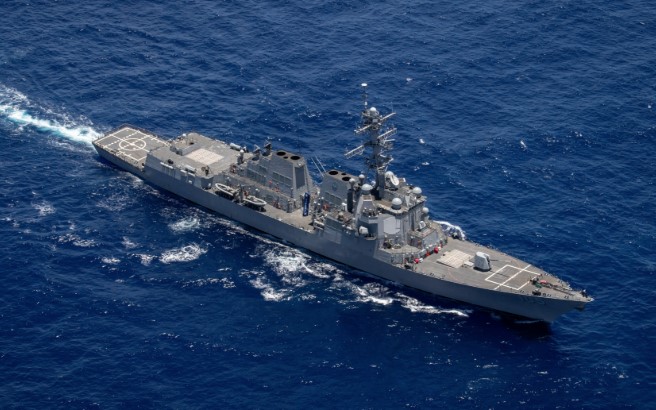China’s military announced that it had monitored and “drove away” a US Navy destroyer that sailed close to the Scarborough Shoal in the South China Sea. This shoal is a small group of rocks and reefs but has become one of the most hotly contested areas in the region.
Disputed Waters Witness Rare Destroyer Encounter
According to China’s Southern Theatre Command, the American destroyer entered these waters without approval. China described the action as a violation of its sovereignty and security. Officials in Beijing said the move disrupted peace and stability in the South China Sea, and they pledged to remain on “high alert.”
The incident marks the first known time in at least six years that reports have confirmed a US destroyer operating this close to the shoal. The timing of the operation gains significance because Philippine authorities accused Chinese vessels of carrying out dangerous maneuvers during a supply mission to the same area just one day earlier.
🔥 From Manila to the South China Sea: Is the Indo-Pacific on the Edge of a Naval Flashpoint?
Multiple nations claim the waters around the Scarborough Shoal, and they consider control over this strategic location important for both security and economic reasons. The area is also a busy maritime route, with ships carrying trillions of dollars in goods passing through every year.
US Navy Justifies Destroyer Mission
The US Navy’s Seventh Fleet confirmed that the destroyer USS Higgins had sailed near Scarborough Shoal. It said the action followed international law and aimed to assert the rights and freedoms of navigation.
US forces regularly conduct what they call “freedom of navigation” operations in the South China Sea. These missions challenge what the US views as excessive maritime claims by several countries, including China. The Navy explained that such operations demonstrate the right to sail through international waters without restrictions, as allowed under the United Nations Convention on the Law of the Sea.
Philippines Arrests 5 More Chinese Spies in Escalating South China Sea Dispute
The Seventh Fleet stated that nothing said by other nations would stop the US from operating in areas where international law permits. The destroyer’s operation near Scarborough Shoal, they added, was part of a long-standing commitment to maintain free passage for ships and aircraft.
For China, however, the US Navy’s move was viewed as a deliberate provocation. Authorities in Beijing argued that the shoal and surrounding waters fall under Chinese jurisdiction, based on historic maps and long-standing claims. China has consistently rejected an international tribunal’s 2016 ruling that said its claims in the South China Sea have no legal basis.
Rising Tensions and Local Incidents
The South China Sea remains one of the world’s most disputed maritime regions. Along with China and the Philippines, countries such as Vietnam, Malaysia, Brunei, Taiwan, and Indonesia have overlapping claims to various islands, reefs, and shoals. The area’s importance goes beyond territorial rights. It is also rich in fish stocks and is believed to contain undersea oil and gas reserves.
This week, the situation at Scarborough Shoal escalated further. During a separate incident, two Chinese vessels reportedly collided with each other in the shoal’s vicinity. This is the first known collision of its kind in the area. The Philippines said Chinese coast guard ships had engaged in maneuvers that blocked and interfered with its supply vessels.
🔥South China Sea Shock: Vietnam’s Secret Island Boom Stuns Rivals Amid Rising Tensions🔥
China’s coast guard later confirmed that it had taken what it called “necessary measures” to drive Philippine ships away from the waters around the shoal. These actions underline the physical and political risks faced by all sides involved in the dispute.
The South China Sea’s significance cannot be overstated. It is a crucial waterway for global trade, with more than $3 trillion worth of goods transported through its lanes each year. Any military or coast guard activity here immediately attracts worldwide attention due to the potential impact on shipping routes and regional stability.
The Scarborough Shoal in particular has been a recurring flashpoint. Although it is uninhabited, its location gives strategic control over surrounding waters. As a result, both military and coast guard ships — and occasionally a destroyer — from different countries frequently patrol the area, increasing the risk of confrontations like the one involving the USS Higgins.

